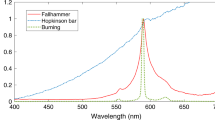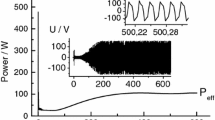Abstract
IN a recent communication1 by one of us, substantial evidence was given of the suppression of the D-line sodium radiation in hydrogen flames by additives—such as carbon dioxide and other polyatomic molecules—which likewise inhibit the chemiluminescence of manganese-promoted calcium oxide in contact with the flames. It was considered that the effect of the additive was greatly to reduce the concentration of hydrogen atoms, the presence of which is necessary for the chemiluminescent effect referred to.
Similar content being viewed by others
References
Arthur, J. R., Nature, 165, 557 (1950).
Kohn, H., Ann. Physik., 44, 749 (1914).
Lewis, B., and Von Elbe, G., “Combustion Flames and Explosions of Gases”, 329 (Cambridge, 1938).
Gaydon, A. G., “Dissociation Energies and Spectra of Diatomic Molecules” (London, 1947).
Author information
Authors and Affiliations
Rights and permissions
About this article
Cite this article
ARTHUR, J., BANGHAM, D., BAULK, R. et al. The Reactions Leading to the Sodium D-Line Radiation in Flames. Nature 166, 358–359 (1950). https://doi.org/10.1038/166358a0
Issue Date:
DOI: https://doi.org/10.1038/166358a0
- Springer Nature Limited





